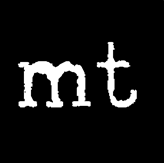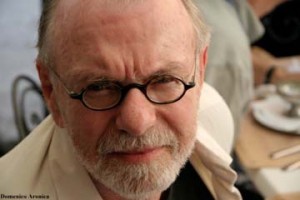 From the inaugural issue of Media Theory, W.J.T. Mitchell considers when and how something counts as a medium, and proposes his five rules of media theory.
From the inaugural issue of Media Theory, W.J.T. Mitchell considers when and how something counts as a medium, and proposes his five rules of media theory.
Counting Media:
Some Rules of Thumb
W.J.T. MITCHELL
University of Chicago, USA
Theory is philosophy that is aware of its own mediation. Therefore, media theory has to be philosophical, but it cannot take its own metalanguage for granted. It has to play with its own means, on its own field, allowing theory to emerge as sensuous, articulate experience, as images, sounds, and words.
But this does not mean that media theory is just “one damn thing after another,” as Richard Rorty once characterized history. Media are systems. It is possible to describe their structural features, and to differentiate them more or less rigorously. We can focus this point by asking the question, “how many kinds of media are there?” Since anything – a rock, a weed, a person – can become a medium under the right circumstances, it would seem like the answer is infinite or indefinite. All we need to ask is when and how does something count as a medium, and we find ourselves counting “the media” endlessly. So what we need is an account of this counting, a theory that takes us beyond mere enumeration of examples. That should be the goal of a journal that deserves the name, Media Theory. Here are a few gestures, by way of some propositions and prepositions.
The Rule of Three
There are three and only three great orders of media: images, sounds, and words. This triad emerges from the convergence of the limits of the human sensorium with the fundamental ways in which human beings create meaning. Seeing and hearing, what Hegel called the “theoretic senses,” are mediated (transmitted and stored) in images and recordings, material or mental. Memory itself is multi-media faculty oriented toward storage and retrieval, while imagination projects the same ensemble of audio-visual traces forward in time. This sensuous dimension of media converges with language, or more generally, semiosis: sounds become formal and patterned in music, articulate in speech, chaotic and disarticulated at the moveable frontiers of sense. Sensations become signs; signs are sensed. Out of this we make sense and (even better) nonsense.
Test this proposition by asking yourself if you can think of a medium that does not involve one or more of the three great orders. What else is there in cinema, theater, opera besides images, sounds, and words? What do you see on the screen of your computer other than icons, words, and the indexical pointer that moves and activates them? The three basic orders of media produce the double signification of “sense” as feeling and meaning. Peirce’s triad of icon, index, and symbol aligns itself with Roland Barthes’s Image/Music/Text; with Foucault’s “seeable and sayable” separated by the blank space between a picture and a proposition; with Nelson Goodman’s division of notational/inscriptional modalities into “score, script, and sketch”; with Aristotle’s division of theater into the elements of “melos, opsis, and lexis”; with Saussure’s anatomy of language into iconic signified, symbolic signifier, and indexical bar; with David Hume’s division of the association of ideas into relations of similitude, cause and effect, and arbitrary signage; with Lacan’s “registers” of the Symbolic, Imaginary, and Real; with Friedrich Kittler’s tracing of the three media storage technologies in Gramophone Film Typewriter.[1]
The Rule of One
It may look as if the rule of three also governs the most common image of media we possess, namely, the communication model that postulates a sender and receiver connected by a medium of transmission (images, sounds, words). But the medium is itself the “third” in this case, the betweenness consisting of signals and codes, and the apparatus for delivering them. So perhaps this should be called the “rule of one,” since the medium is in this case a specifiable, even a specific, at times a singular thing composed of the elements specified by the Rule of Three. That composition may be highly variable, emphasizing one of the elements (as in pure music) or bringing them together in novel combinations (the Gesamstkunstwerk). The singularity or specificity of a medium, then, is not reducible to its material, technical support, but includes the practices, skills, and purposes to which it is put. “Medium specificity” is more like the specific character of a recipe than any specific ingredient, or even a list of ingredients. It is a way of putting things together – paint with brushes and canvas; ink with paper and writing; pixels with purposes.
The Rule of Two
There are two basic ways of positioning – or more precisely, of pre-positioning, media: “in” and “through.” The medium “in” is the use of materials and technology for storage and retrieval. It is the “input” model in which something is embedded, uploaded, locked away in order to be seen, heard, or felt in a moment of downloading and reception. The medium “through” is the transmission/ communication model. The contrast between media in and through is exemplified by the difference between a live and recorded performance, between a signal fire that announces the fall of Troy, and a campfire around which we huddle to tell stories about the fall of Troy. Of course, the two pre-positions of media constantly converge, as when the live, real-time news broadcast is stored on your DVR, or the pre-recorded video is played back in the here and now. That is why the rule of two is constantly re-affirmed and broken at the same time.
The Rule of None
Media are both everything and nothing. Absolutely anything can become a medium, but that does not mean that everything is functioning as a medium at all times. Paint is a medium when it is used to make a picture or adorn a body; it is not a medium while it is sitting in the can. There is always something outside or beyond a medium – the unmediated, the immediate, the presentation as opposed to the representation. We need to reverse the famous, misconstrued Derridean axiom, “there is nothing outside the text,” to say just the opposite: “there is always something outside a medium,” something that exceeds, escapes, defies mediation. Media theory must investigate its own antitheses. The field should be re-named “Immedia Studies.” Of course, every moment of immediacy will give way at some point to the Jack Horner principle, and we will pull out a plum: “Ahah, it is mediated after all!” We need to study the moment before we pull out that all too predictable plum.
The Rule of All
Nature, God, the Universe are the media “in which we live and move and have our being.” Space and time are media. The stars will go on transmitting light through space-time long after we are around to see them, just as they did before we emerged from the slime. And the sun will continue to store energy in rotting vegetation long after we are around to extract oil from the earth. Living things will continue to imprint their remains in the mud as fossils, and the air will continue to transmit sound. But minds are also media, dependent on the material support known as brains embedded in bodies connected by media to other bodies. Marshall McLuhan said that the content of every medium is another medium, so the content of a film is a staged performance, and prior to that, the performance may be re-mediating the script which adapts the content of a novel.[2] To keep it simple, think of the way the content of writing is speech. But what is the content of speech? My answer: thought is the content of speech. But then what is the content of thought? We suddenly find ourselves coming around the curve of a circle encompassing the totality of media: the content of thought is words, images, and sounds, the three orders with which we began. That is why all those big, cosmic media, Nature, God, the Universe, can become the content of something as tiny as the human brain, or Blake’s grain of sand.
Notes
[1] For more on these triads, see the chapter on “Media Aesthetics” in Image Science: Iconology, Visual Culture and Media Aesthetics (University of Chicago Press, 2015).
[2] This idea is further elaborated in Bolter and Grusin’s concept of “re-mediation” in Jay David Bolter and Richard Grusin, Remediation: Understanding New Media, (Cambridge, MA: The MIT Press, 1999).
W. J. T. Mitchell is Gaylord Donnelley Distinguished Service Professor of English and Art History at the University of Chicago. He served as Chair of the English Department from 1988 to 1991, and has been the editor of Critical Inquiry since 1978. His recent publications include two books: Cloning Terror: The War of Images, September 11 to Abu Ghraib (2011), and Critical Terms in Media Studies (2010; with Mark Hansen). His book, Seeing Through Race, based on the W. E. B. DuBois Lectures at Harvard, was published by Harvard University Press in 2012, and his collaborative book, Occupy: Three Essays in Disobedience, co-authored with Michael Taussig and Bernard Harcourt, was published by Chicago in the spring of 2013. His newest book is Image Science: Iconology, Media Aesthetics, and Visual Culture (2015). He is currently working on a book entitled Seeing Madness: Insanity, Media, and Visual Culture.
Email: wjtm@uchicago.edu

This article is taken from the inaugural issue of Media Theory, 1/1 – the ‘Manifestos’ Issue.
The version of record of this article is available here: http://journalcontent.mediatheoryjournal.org/index.php/mt/article/view/13
The ‘Manifestos’ issue is available here: http://journalcontent.mediatheoryjournal.org/index.php/mt/issue/view/1



Leave a Reply